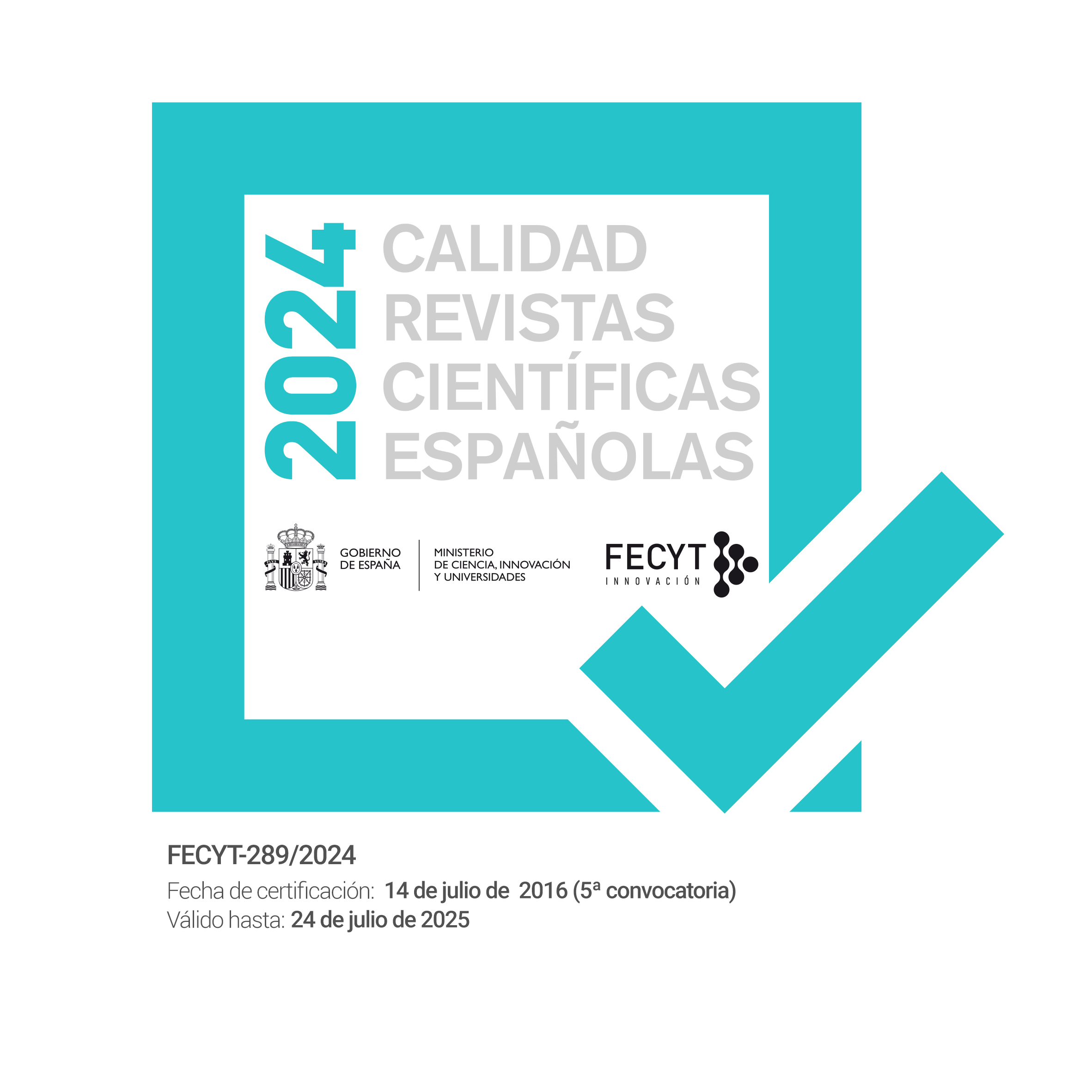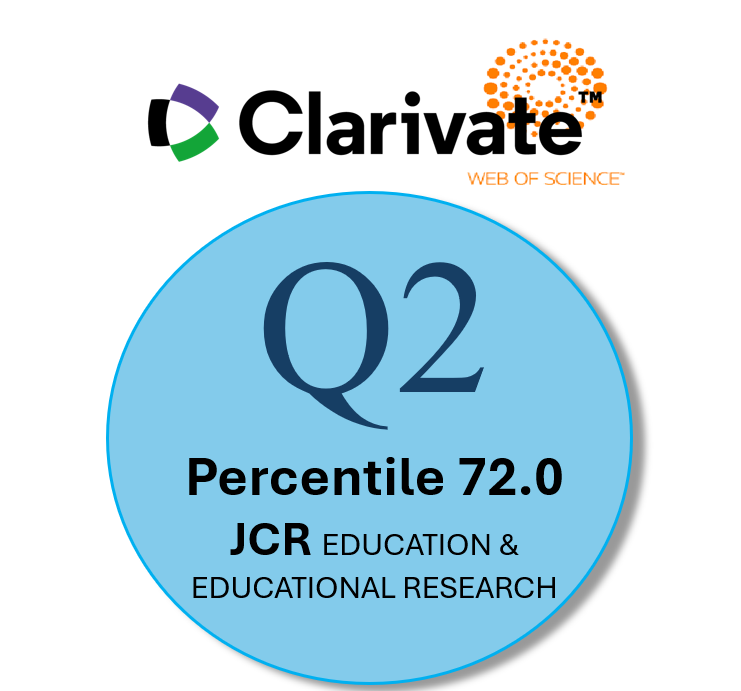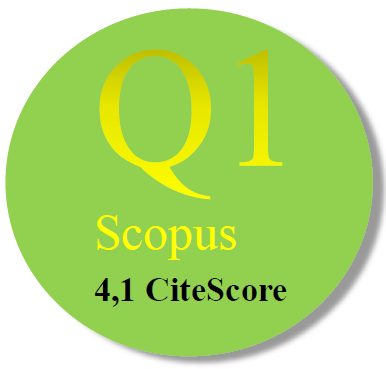The Comparison of STEM approach and SSCS Learning Model for Secondary School-Based on K-13 Curriculum: The Impact on Creative and Critical Thinking Ability
Abstract
In the 21st century, the significance of competencies is increasing in our everyday lives and in the labor market. Such complex competencies like critical and creative thinking is a topic that are becoming more and more relevant. In the past, researchers have shown a direct link between creative thinking and teaching methods. The project will apply a STEM research method throughout the study and comparing SSCS learning. The study focuses on the critical examination of specific assignments and students' critical and creative thinking. In this study, researchers used prisms and pyramids as stimuli for 125 students to evaluate their imagination. This study uses a quasi-experimental design to explore a different hypothesis about the link between STEM and SSCS on student creativity and critical thinking. To determine whether or not the data collection technique can assist students in improving their critical and creative thinking, it has been put through its paces. MANOVA has been shown to be effective in testing hypotheses in several studies. Compared to the SSCS learning model, the STEM-based K-13 curriculum positively impacts critical and creative thinking. It can be concluded that the STEM approach, as opposed to the SSCS model, can be used as an alternative solution for learning in the industrial era 4.0.
Downloads
-
Abstract1461
-
PDF1681
References
Acar, D., Tertemiz, N., & Taşdemir, A. (2018). The Effects of STEM Training on the Academic Achievement of 4th Graders in Science and Mathematics and their Views on STEM Training. International Electronic Journal of Elementary Education, 10(4), 505–513.
Afari, E. (2013). Examining the factorial validity of the attitudes towards mathematics inventory (ATMI) in the United Arab Emirates: Confirmatory factor analysis. International Review of Contemporary Learning Research An International Journal, 2(1), 15–29.
Aguilera, D., Lupiáñez, J. L., Vílchez-González, J. M., & Perales-Palacios, F. J. (2021). In Search of a Long-Awaited Consensus on Disciplinary Integration in STEM Education. Mathematics, 9(6), 597. https://doi.org/10.3390/math9060597
Aizikovitsh-Udi, E., & Cheng, D. (2015). Developing critical thinking skills from dispositions to abilities: Mathematics education from early childhood to high school. Creative Education, 6(04), 455. https://doi.org/10.4236/ce.2015.64045
Alper, A. (2010). Critical thinking disposition of pre-service teachers. Egitim ve Bilim, 35(158), 14.
Ampountolas, A., Shaw, G., & James, S. (2019). Active learning to improve self-confidence and decision-making skills through the use of hotel simulation. Journal of Hospitality & Tourism Education, 31(3), 125–138. https://doi.org/10.1080/10963758.2018.1487786
Barak, M., & Doppelt, Y. (2000a). Using portfolios to enhance creative thinking. Journal of Technology Studies, 26(2), 16–25.
Barak, M., & Doppelt, Y. (2000b). Using portfolios to enhance creative thinking.
Barrett, K. C., & Limb, C. J. (2019). Unveiling artistic minds: Case studies of creativity. Current Opinion in Behavioral Sciences, 27, 84–89. https://doi.org/10.1016/j. cobeha.2018.09.005
Bekteshi, E. (2017). The’FoursCs’-Collaboration, Communication, Critical Thinking and Creative Thinking at the Faculty of Arts (FLUP), University of Porto, Porto, Portugal. Journal of International Social Research, 10(50).
Bers, M. U., Flannery, L., Kazakoff, E. R., & Sullivan, A. (2014). Computational thinking and tinkering: Exploration of an early childhood robotics curriculum. Computers & Education, 72, 145–157.
Brezovnik, A. (2015). The benefits of fine art integration into mathematics in primary school. CEPS Journal, 5(3), 11–32.
Canning, E. A., Muenks, K., Green, D. J., & Murphy, M. C. (2019). STEM faculty who believe ability is fixed have larger racial achievement gaps and inspire less student motivation in their classes. Science Advances, 5(2), 1–7. https://doi.org/10.1126/sciadv.aau4734
Chai, C. S. (2019). Teacher professional development for science, technology, engineering and mathematics (STEM) education: A review from the perspectives of technological pedagogical content (TPACK). The Asia-Pacific Education Researcher, 28(1), 5–13.
Choi, H. H., & Kim, M. J. (2017). The effects of analogical and metaphorical reasoning on design thinking. Thinking Skills and Creativity, 23, 29–41. https://doi.org/10.1016/j.tsc.2016.11.004
Corebima, A. D., Susilo, H., & Zubaidah, S. (2017). Creative Thinking of Low Academic Student Undergoing Search Solve Create and Share Learning Integrated with Metacognitive Strategy. International Journal of Instruction, 10(2). https://doi.org/10.12973/iji.2017.10216a
Dasaprawira, M. N. (2019). Developing Mathematics Questions of PISA Type Using Bangka Context. Journal on Mathematics Education, 10(2), 303–314.
Davies, D., Jindal-Snape, D., Collier, C., Digby, R., Hay, P., & Howe, A. (2013). Creative learning environments in education—A systematic literature review. Thinking Skills and Creativity, 8, 80–91.
Defazio, J., Jones, J., Tennant, F., & Hook, S. A. (2010). Academic Literacy: The Importance and Impact of Writing across the Curriculum—A Case Study. Journal of the Scholarship of Teaching and Learning, 10(2), 34–47.
D’silva, J. L. (2007). Determinants of actual usage of computer among Mathematics, Science and English language teachers in secondary schools in Selangor, Malaysia. UPM, Kuala Lumpur.
Erdogan, N., Navruz, B., Younes, R., & Capraro, R. M. (2016). Viewing how STEM project-based learning influences students’ science achievement through the implementation lens: A latent growth modeling. Eurasia Journal of Mathematics, Science and Technology Education, 12(8), 2139–2154.
Ernst, J., Williams, T., Clark, A., Kelly, D., & Sutton, K. (2018). K-12 STEM educator autonomy: An investigation of school influence and classroom control. Journal of STEM Education, 18(5).
Fauzi, K., Amin, M., Dirgeyase, I. W., & Priyatno, A. (2019). Building Learning Path of Mathematical Creative Thinking of Junior Students on Geometry Topics by Implementing Metacognitive Approach. International Education Studies, 12(2), 57–66. https://doi.org/10.5539/ies.v12n2p57
Fitzakerley, J. L., Michlin, M. L., Paton, J., & Dubinsky, J. M. (2013). Neuroscientists’ classroom visits positively impact student attitudes. PloS One, 8(12), e84035. https://doi.org/10.1371/journal.pone.0084035
Glăveanu, V. P. (2015). Creativity as a sociocultural act. The Journal of Creative Behavior, 49(3), 165–180. https://doi.org/10.1002/jocb.94
Han, S., Rosli, R., Capraro, M. M., & Capraro, R. M. (2016). The Effect of Science, Technology, Engineering and Mathematics (STEM) Project Based Learning (PBL) on Students’ Achievement in Four Mathematics Topics. Journal of Turkish Science Education (TUSED), 13.
Haridza, R., & Irving, K. E. (2017). The Evolution of Indonesian and American Science Education Curriculum: A Comparison Study. Educare, 9(2). https://doi.org/10.2121/edu-ijes.v9i2.802
Hassett, D. D., & Curwood, J. S. (2009). Theories and practices of multimodal education: The instructional dynamics of picture books and primary classrooms. The Reading Teacher, 63(4), 270–282. https://doi.org/10.1598/RT.63.4.2
Henriksen, D., Mishra, P., & Fisser, P. (2016). Infusing creativity and technology in 21st century education: A systemic view for change. Educational Technology & Society, 19(3), 27–37.
Hill, C., Corbett, C., & St Rose, A. (2010). Why so few? Women in science, technology, engineering, and mathematics. ERIC.
Holmlund, T. D., Lesseig, K., & Slavit, D. (2018). Making sense of “STEM education” in K-12 contexts. International Journal of STEM Education, 5(1), 1–18. https://doi.org/10.1186/s40594-018-0127-2
Hu, R., Wu, Y.-Y., & Shieh, C.-J. (2016). Effects of virtual reality integrated creative thinking instruction on students’ creative thinking abilities. Eurasia Journal of Mathematics, Science and Technology Education, 12(3), 477–486. https://doi.org/10.12973/eurasia.2016.1226a
Huda, S., Rinaldi, A., Suherman, S., Sugiharta, I., Astuti, D. W., Fatimah, O., & Prasetiyo, A. E. (2019). Understanding of Mathematical Concepts in the Linear Equation with Two Variables: Impact of E-Learning and Blended Learning Using Google Classroom. Al-Jabar: Jurnal Pendidikan Matematika, 10(2), 261–270. https://doi.org/10.24042/ajpm.v10i2.5303
Karwowski, M., Lebuda, I., & Wiśniewska, E. (2018). Measuring creative self-efficacy and creative personal identity. The International Journal of Creativity & Problem Solving.
Kelley, T. R., & Knowles, J. G. (2016). A conceptual framework for integrated STEM education. International Journal of STEM Education, 3(1), 11.
Khasanah, A. N., Widoretno, S., & Sajidan, S. (2017). Effectiveness of Critical Thinking Indicator-Based Module in Empowering Student’s Learning Outcome in Respiratory System Study Material. Jurnal Pendidikan IPA Indonesia, 6(1), 120425. https://doi.org/10.15294/jpii.v6i1.8490
Koch, A. J., D’Mello, S. D., & Sackett, P. R. (2015). A meta-analysis of gender stereotypes and bias in experimental simulations of employment decision making. Journal of Applied Psychology, 100(1), 128. https://doi.org/10.1037/a0036734
Komarudin, K., Suherman, S., Puspita, L., Arrafiansyah, R., & Hasanah, U. (2020). Program course lab 2.4 mathematics learning media for increasing of creativity domain at Higher Order Thinking Skills (HOTS). Journal of Gifted Education and Creativity, 7(3), 131–136.
Kuswanto, H. (2018). Android-Assisted Mobile Physics Learning Through Indonesian Batik Culture: Improving Students’ Creative Thinking and Problem Solving. International Journal of Instruction, 11(4).
Liao, C.-W., Chen, C.-H., & Shih, S.-J. (2019). The interactivity of video and collaboration for learning achievement, intrinsic motivation, cognitive load, and behavior patterns in a digital game-based learning environment. Computers & Education, 133, 43–55. https://doi.org/10.1016/j.compedu.2019.01.013
Lucas, B., & Spencer, E. (2017). Teaching Creative Thinking: Developing learners who generate ideas and can think critically (Pedagogy for a Changing World series). Crown House Publishing Ltd.
McCullough, L. (2011). Women’s Leadership in Science, Technology, Engineering and Mathematics: Barriers to Participation. Forum on Public Policy Online, 2011(2).
Milama, B., Bahriah, E. S., & Mahmudah, A. (2017). The effect of Search, Solve, Create, and Share (SSCS) learning model towards student’s critical thinking skills. Jurnal Penelitian Dan Pembelajaran IPA, 3(2), 112–123. https://doi.org/10.30870/jppi.v3i2.2574
Montag-Smit, T., & Maertz Jr, C. P. (2017). Searching outside the box in creative problem solving: The role of creative thinking skills and domain knowledge. Journal of Business Research, 81, 1–10. https://doi.org/10.1016/j.jbusres.2017.07.021
OECD. (2019). Draft Framework for the Assessment of Creative Thinking in PISA 2021. OECD Publisher.
Overton, T. L., & Randles, C. A. (2015). Beyond problem-based learning: Using dynamic PBL in chemistry. Chemistry Education Research and Practice, 16(2), 251–259. https://doi.org/10.1039/C4RP00248B
Panorama, E. S. (2014). Employability and skills of higher education graduates: Analytical highlight. A report by ICF GHK and Cedefop for the European Commission. Brussels: European Commission.
Pringle, A., & Sowden, P. T. (2017). Unearthing the creative thinking process: Fresh insights from a think-aloud study of garden design. Psychology of Aesthetics, Creativity, and the Arts, 11(3), 344. https://doi.org/10.1037/aca0000144
Rahardjanto, A. (2019). Hybrid-PjBL: Learning Outcomes, Creative Thinking Skills, and Learning Motivation of Preservice Teacher. International Journal of Instruction, 12(2), 179–192. https://doi.org/10.29333/iji.2019.12212a
Rakhmi, D. A., Kartono, K., & Mastur, Z. (2018). Constructtivism mathematics learning with search, solve, create, and share (sscs) model to improve mathematics disposition and student concept understanding of limit function materials of XI natural science class. Unnes Journal of Mathematics Education Research, 7(1), 117–122.
Reiter-Palmon, R., & Robinson, E. J. (2009). Problem identification and construction: What do we know, what is the future? Psychology of Aesthetics, Creativity, and the Arts, 3(1), 43.
Rustam, N. I., & Fauzi, A. (2019). Effectiveness of integrated science textbook theme earthquake using connected model SSCS problem solving. Journal of Physics: Conference Series, 1185(1), 012092. https://doi.org/10.1088/1742-6596/1185/1/012092
Sagala, R., Umam, R., Thahir, A., Saregar, A., & Wardani, I. (2019). The Effectiveness of STEM-Based on Gender Differences: The Impact of Physics Concept Understanding. European Journal of Educational Research, 8(3), 753–761. https://doi.org/10.12973/eu-jer.8.3.753
Salavera, C., Usan, P., & Jarie, L. (2017). Emotional intelligence and social skills on self-efficacy in secondary education students. Are there gender differences? Journal of Adolescence, 60, 39–46.
Saregar, A., Irwandani, I., Abdurrahman, A., Parmin, P., Septiana, S., Diani, R., & Sagala, R. (2018). Temperature and heat learning through SSCS model with scaffolding: Impact on students’ critical thinking ability. Journal for the Education of Gifted Young Scientists, 6(3), 39–54. https://doi.org/10.17478/JEGYS.2018.80
Siagan, M. V., Saragih, S., & Sinaga, B. (2019). Development of Learning Materials Oriented on Problem-Based Learning Model to Improve Students’ Mathematical Problem Solving Ability and Metacognition Ability. International Electronic Journal of Mathematics Education, 14(2), 331–340. https://doi.org/10.29333/iejme/5717
Siry, C., & Gorges, A. (2020). Young students’ diverse resources for meaning making in science: Learning from multilingual contexts. International Journal of Science Education, 42(14), 2364–2386. https://doi.org/10.1080/09500693.2019.1625495
Sternberg, R. J. (2003). Creative thinking in the classroom. Scandinavian Journal of Educational Research, 47(3), 325–338.
Sternberg, R. J. (2019). Measuring creativity: A 40+ year retrospective. The Journal of Creative Behavior. https://doi.org/10.1002/jocb.237
Stoet, G., & Geary, D. C. (2018). The gender-equality paradox in science, technology, engineering, and mathematics education. Psychological Science, 29(4), 581–593. https://doi.org/10.1177/0956797617741719
Suherman, S., Vidákovich, T., & Komarudin, K. (2021). STEM-E: Fostering mathematical creative thinking ability in the 21st Century. Journal of Physics: Conference Series, 1882(1), 012164. https://doi.org/10.1088/1742-6596/1882/1/012164
Tanggaard, L., & Glaveanu, V. P. (2014). Creativity assessment as intervention. Akademisk Kvarter| Academic Quarter, 18–30.
Ulrich, F., & Nielsen, P. A. (2020). Chaos and creativity in dynamic idea evaluation: Theorizing the organization of problem‐based portfolios. Creativity and Innovation Management, 29(4), 566–580. https://doi.org/10.1111/caim.12400
Wahyu, W., Suryatna, A., & Amalia, G. (2019). An The Implementation of SSCS (Search-Solve-Create-Share) Model with Workhseet to Build
Students’ Creativity on Making Simple Water Purifier in Chemistry CLassroom. Unnes Science Education Journal, 8(3).
Williams, M. K. (2017). John Dewey in the 21st century. Journal of Inquiry and Action in Education, 9(1), 7.
Winarni, J., Zubaidah, S., & Koes, S. (2016). STEM: Apa, mengapa, dan bagaimana. Prosiding Semnas Pend IPA Pascasarjana UM.
Yasin, M., & Fakhri, J. (2020). The Effect of SSCS Learning Model on Reflective Thinking Skills and Problem Solving Ability. European Journal of Educational Research, 9(2), 743–752. https://doi.org/10.12973/eu-jer.9.2.743
Yusnaeni, aloysius duran corebima. (2017). Empowering students’ metacognitive skills on sscs learning model integrated with metacognitive strategy. The International Journal of Social Sciences and Humanities Invention, 4(5), 3476–3481. https://doi.org/10.18535/ijsshi/v4i5.03
Zhu, Z., Nagalingam, S., & Hsu, H.-Y. (2011). Toward a creative problem-solving methodology with knowledge provision. Applied Artificial Intelligence, 25(9), 836–881. https://doi.org/10.1080/08839514.2011.613570
Zubkova, Ma., Iu, F. N., Baranova, En., Il, A. L., Pirozhkova, Ao., & Bubenchikova, Av. (2019). Approaches to the future engineers foreign communicative culture formation. Humanities & Social Sciences Reviews, 7(4), 781–786. https://doi.org/10.18510/hssr.2019.74101
Zulnaidi, H., Heleni, S., & Syafri, M. (2021). Effects of SSCS Teaching Model on Students’ Mathematical Problemsolving Ability and Self-efficacy. International Journal of Instruction, 14(1). https://doi.org/10.29333/iji.2021.14128a
Copyright (c) 2022 Distance Education Journal

This work is licensed under a Creative Commons Attribution-NonCommercial 4.0 International License.
Las obras que se publican en esta revista están sujetas a los siguientes términos:
1. El Servicio de Publicaciones de la Universidad de Murcia (la editorial) conserva los derechos patrimoniales (copyright) de las obras publicadas, y favorece y permite la reutilización de las mismas bajo la licencia de uso indicada en el punto 2.
2. Las obras se publican en la edición electrónica de la revista bajo una licencia Creative Commons Reconocimiento-NoComercial-SinObraDerivada 3.0 España (texto legal). Se pueden copiar, usar, difundir, transmitir y exponer públicamente, siempre que: i) se cite la autoría y la fuente original de su publicación (revista, editorial y URL de la obra); ii) no se usen para fines comerciales; iii) se mencione la existencia y especificaciones de esta licencia de uso.
3. Condiciones de auto-archivo. Se permite y se anima a los autores a difundir electrónicamente las versiones pre-print (versión antes de ser evaluada) y/o post-print (versión evaluada y aceptada para su publicación) de sus obras antes de su publicación, ya que favorece su circulación y difusión más temprana y con ello un posible aumento en su citación y alcance entre la comunidad académica. Color RoMEO: verde.













